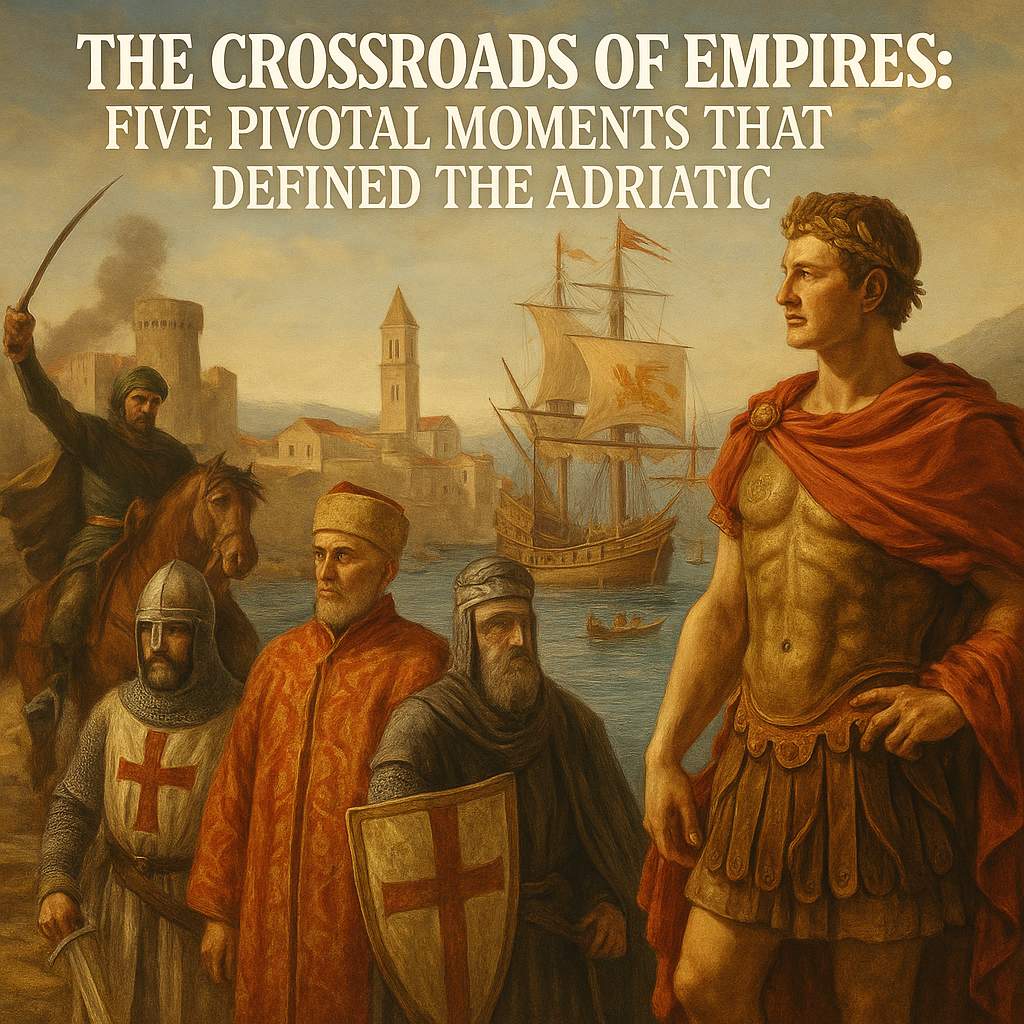The Adriatic Sea has served as more than just a body of water separating Italy from the Balkans—it has been the stage for some of history's most consequential turning points. From ancient Greek colonies to medieval maritime empires, the region's strategic position has made it a crucible where East meets West, where empires rise and fall, and where the fate of civilizations has been decided.
1. Greek Colonization: The Foundation of Adriatic Civilization (7th-6th Century BC)
The story begins with Greek colonisation of the Adriatic dating back to the 7th and 6th centuries BC when the ancient cities of Epidamnos and Apollonia were founded. This wasn't merely territorial expansion—it was the birth of urban civilization along the Adriatic coast. The Greeks established trade networks that would endure for millennia, creating the first economic and cultural bridges between the Italian peninsula and the Balkans.
The founding of cities like Ancona, Issa (modern-day Vis), and others transformed the Adriatic from a frontier into a highway of commerce and ideas. These settlements became the DNA of future prosperity, establishing patterns of trade and cultural exchange that would define the region's character.
2. Roman Maritime Dominance: The Adriatic as Empire's Highway (1st Century BC - 5th Century AD)
When Rome turned its attention to the Adriatic, the sea became the empire's eastern gateway. It was used by the ancient Romans to transport goods, including animals and slaves, to Ostia, the Roman port. But this transformation went beyond logistics—it represented the Adriatic's integration into the world's first truly global economy.
Roman engineering prowess connected Adriatic ports to the empire's vast road network, while Roman law and administration created the stable conditions necessary for large-scale trade. The Adriatic became a Roman lake, and with it, the region's destiny was linked to the empire's rise and eventual fall.
3. The Rise of Venice: From Byzantine Refuge to Maritime Superpower (9th-13th Century)
Perhaps no turning point was more dramatic than Venice's transformation from a collection of refugee settlements to the "Queen of the Adriatic." Uniquely among Italy's chief cities, Venice came into being after the fall of the Roman Empire in the West. The Lombard hordes, whose incursions into northern Italy began in ad 568, drove great numbers of mainlanders onto the islands of the lagoon.
Founded in the 5th century AD, it was not until the 9th century that Venice started to become a major maritime power, but when it did, the entire balance of Adriatic power shifted. Venice's control over the Adriatic was strengthened by an expedition by Pietro's son Ottone in 1017, by which time Venice had assumed a key role in balancing power between the Byzantine and Holy Roman Empires.
The Fourth Crusade of 1204 marked Venice's definitive arrival as a Mediterranean superpower. Doge Enrico and the Crusaders carved up the Byzantine Empire between them: Venice got the islands of the Aegean, Crete and the strategically placed ports of Modone and Corone, which became known as the Eyes of the Republic. The Adriatic had become Venice's private sea.
4. The Fall of Constantinople: Ottoman Pressure and Venetian Decline (1453)
In 1453, the Ottomans captured the Byzantine capital, Constantinople, and continued to expand their territories in the Balkans, Asia Minor, and the Aegean. This single event reverberated across the Adriatic like a seismic wave. Venice's eastern trade routes—the lifeblood of its prosperity—came under increasing Ottoman control.
The subsequent Ottoman-Venetian wars transformed the Adriatic from a commercial highway into a contested frontier. The sea that had connected civilizations now divided them, with Venice desperately defending its remaining Adriatic possessions against Ottoman expansion from the east.
5. The Napoleonic Watershed: End of an Era (1797)
When Napoleon dissolved the Venetian Republic in 1797, it wasn't just the end of a state—it was the end of over a millennium of Adriatic maritime tradition. The sea that had been dominated by a single city-state was suddenly divided among European powers, setting the stage for the complex national movements that would define the modern Balkans.
The Adriatic's Enduring Legacy
These turning points reveal a fundamental truth about the Adriatic region: its history has always been shaped by its geography. This body of water served as a vital conduit for trade, cultural exchange, and military movements among ancient civilizations, including the Romans, Greeks, and Illyrians. Each empire that dominated the Adriatic understood that controlling this sea meant controlling the flow of goods, ideas, and people between East and West.
Today, as six countries on the Adriatic Sea, each of which has its unique history and cultural identity work together in organizations like the EU and NATO, they continue this ancient tradition of connection across waters. The Adriatic remains what it has always been: not a barrier, but a bridge between worlds.
The sea that witnessed the rise and fall of empires continues to shape the destiny of the millions who call its shores home. In understanding these historical turning points, we better comprehend not just where the Adriatic region has been, but where it might be heading in the centuries to come.

